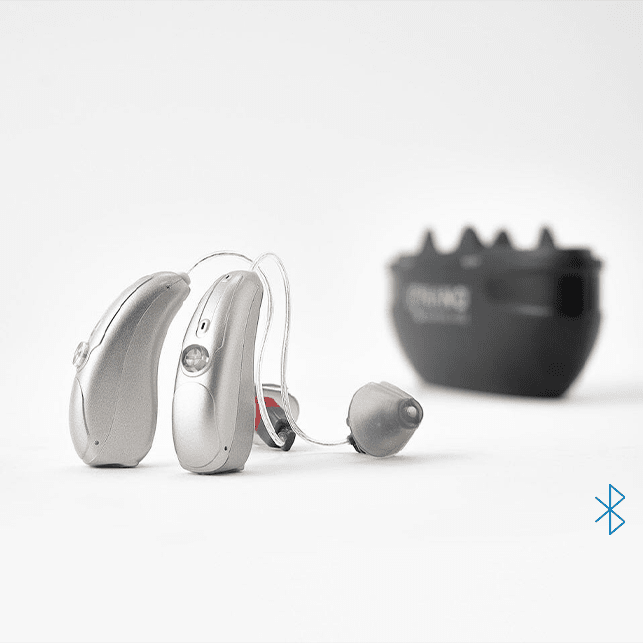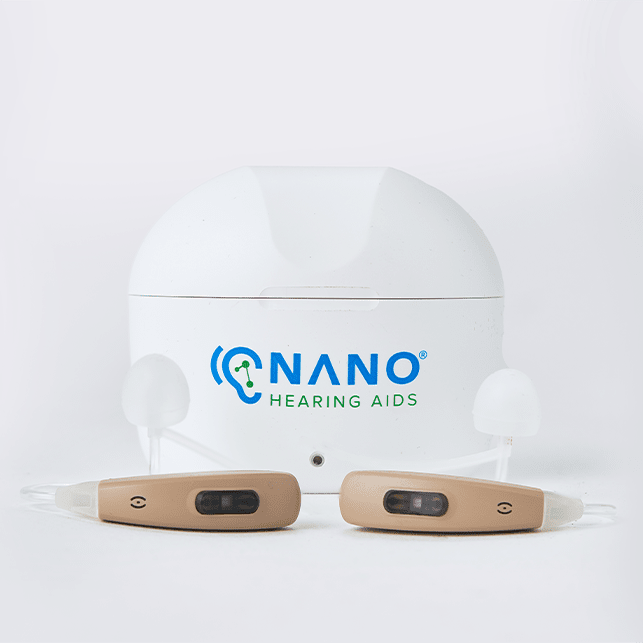Key Takeaways
What is Bluetooth?
Bluetooth is a short-range communication technology that connects devices (normally two or more) for easy, secure, offline data transfer without internet access. Connecting your phone to your home stereo allows you to play music and watch videos with better sound quality. Tablets and computers can exchange large documents without using the internet or limiting sharing capacity on e-mail services.
Nano Hearing Aids are FDA-registered, Class I devices. These OTC hearing aids are designed for individuals over 18 years of age with perceived mild to moderate hearing impairment. Nano won the Top ENT Solution Provider 2023, has 24/7 customer care, and has an affordable price compared to others.
How Does Bluetooth Work with Hearing Aids
Bluetooth hearing aids function by using Bluetooth Low Energy (BLE) to maintain short-range connections while conserving battery power. Since Bluetooth uses high-frequency radio waves, a connection at lower power inputs will still deliver the needed requirement.
These devices include a telecoil, a small wire that finds and connects to Bluetooth signals either manually or automatically. Recent advancements make it easier for hearing aids to connect with various devices, ensuring seamless use with minimal energy consumption.
5 Hearing Aids With Bluetooth Built-in
1. Best Rechargeable Hearing Aids with Bluetooth: Nano Audacity® RIC
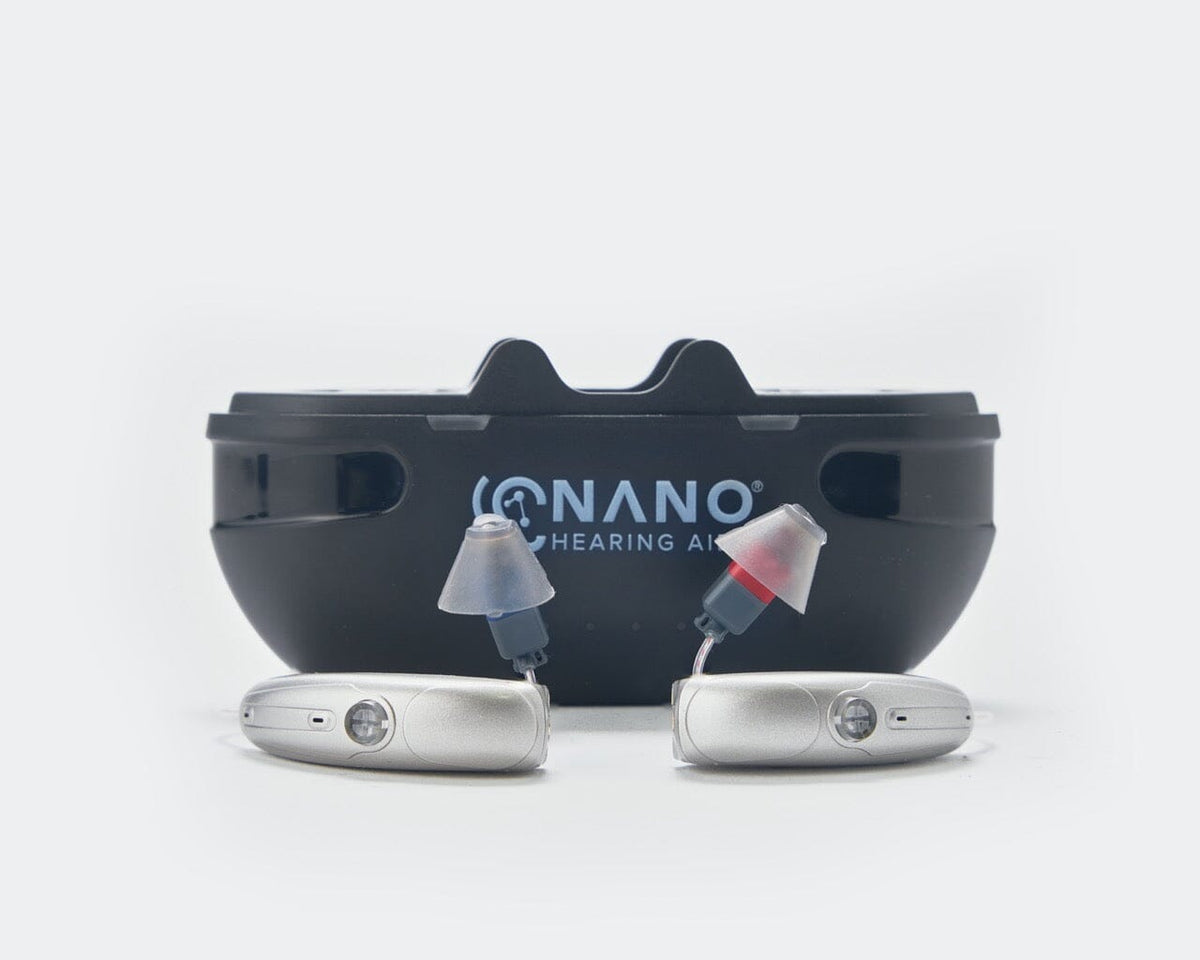
Nano Audacity® RIC.
Features:
The Audacity® RIC lets you stream audio from your phone, tablet, or other Bluetooth-enabled device with ease thanks to Bluetooth technology. This means you can listen to music, take calls, and get audio notifications right through your hearing aids.
You can adjust the volume, switch programs, and personalize your hearing settings right from your smartphone using the Nano Audacity App. This combo of Bluetooth streaming and app control gives you a listening experience that's high quality and convenient.
The rechargeable battery lasts up to 17 hours, so you don't have to worry about replacing it as often. It's RIC design makes it quite discreet, so you can wear it with confidence. At $697, it's an affordable way to get advanced hearing technology.
Plus, we offer a 45-day money-back guarantee and 24/7 customer care, showing our commitment to customer satisfaction.
2. Good Customized Hearing Aid: ReSound
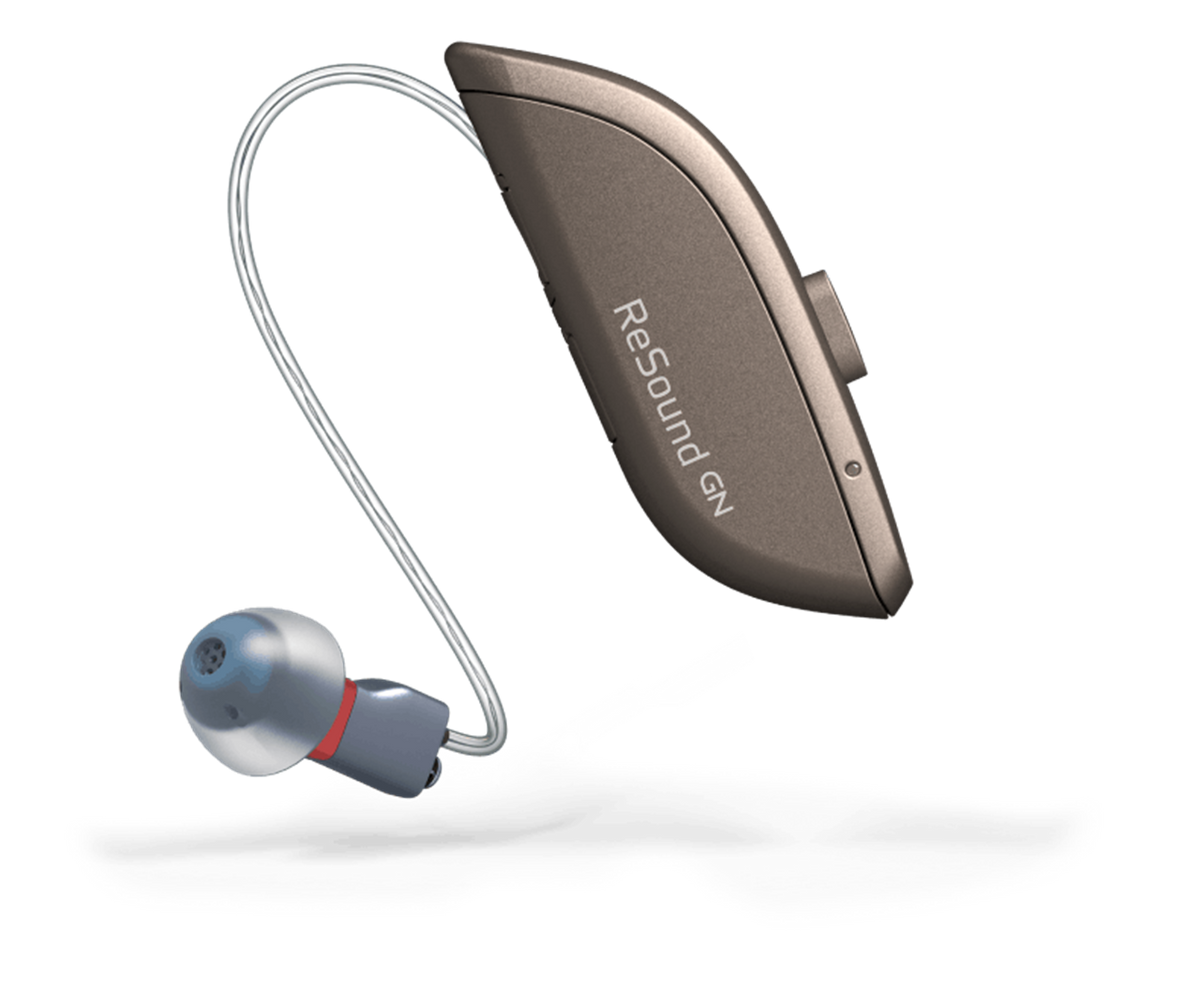
ReSound hearing aids.
Features:
This company provides about 4 different hearing aids, all with Bluetooth connectivity. Their models are ReSound LiNX Quattro, LiNX 3D, ENZO Q, and ENZO 3D. All come with extensive tutorial videos and user guide documents to help patients start using their devices.
ReSound hearing aids are great for people with severe to profound hearing loss. Their models feature customization options, are small and easy to use, and can also adapt hearing quality for different environments.
All of their models have different features for different users; however, it does so at a higher price. For example, ReSound Omnia 9-R costs $2,075 per unit and $3,985 per pair.
3. Best Live Speech Focused: Embrace Hearing Aid
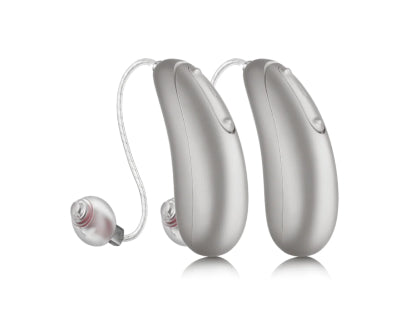
Embrace hearing aids.
Features:
Embrace hearing aids are manufactured in Germany. One of their Bluetooth models, the Embrace X-920, has the added choice of a rechargeable or size 312 battery model.
The X-920 features seven listening environments and Live Speech Focus to identify speech more clearly. For better sound understanding, this device uses 20 programmable channels and can be connected to smartphones to control the settings easily too.
The Embrace hearing aids have a pretty straightforward functionality and a 3-years warranty. Depending on the user's needs, their models are small and work perfectly for people with mild to severe hearing loss. Prices start at around $899 per unit.
4. Best Small Hearing Aids with Bluetooth: Widex
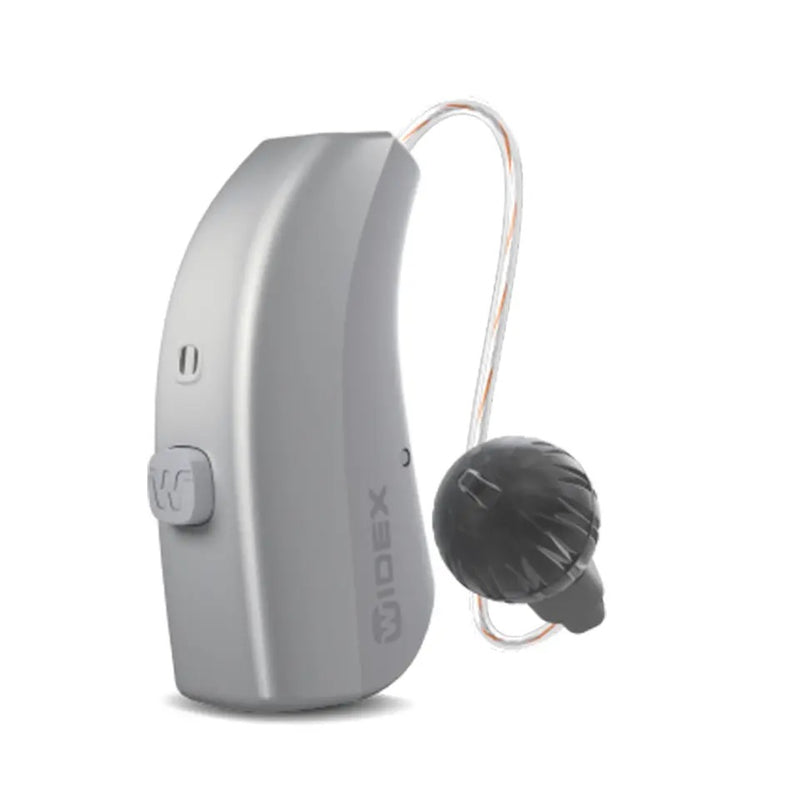
Widex hearing aids.
Features:
Widex brand has many hearing aid product lines that can work for different degrees of hearing loss. Most of them have the BLE technology for stable and power-efficient pairing with smartphones, tablets, and other compatible devices for audio streaming.
One of the product lines, the Widex Moment can stream directly from both iOS and Android devices. Users can listen to phone calls, music, and multimedia audio directly through their hearing aids—no additional accessories needed. It also has the Zen tone feature which is very helpful for users with tinnitus.
Prices range from $1799 to around $3598 per device.
5. Advanced Noise Reduction Technology: Oticon
Oticon hearing aids.
Features:
Oticon hearing aids also have BLE technology, enabling efficient connectivity with smartphones and other devices while conserving battery life. Models such as the Oticon Real and Oticon Intent allow for direct audio streaming from iOS devices (iPhones, iPads) and some Android devices.
Oticon also has a ConnectClip accessory that serves multiple functions. It acts as a remote microphone, remote control, and can convert hearing aids into a wireless headset for streaming audio from any Bluetooth-enabled device.
Can I Connect My Bluetooth Hearing Aid With My Smartphone?
The answer is both yes and no - it depends on the brand and model you’re using.
Your hearing aids must have a 2.4GHz connection, as this will help with stronger connectivity. Smartphones that carry their Bluetooth technology can cover a range from 16ft to 98ft, but this won’t always be the same for your hearing aids.
Apple users can now use their hearing aids with the company’s "Made for iPhone" (MFi) technology, which allows them to stream sound directly from any compatible Apple device, including iPhones, iPads, and iPods. While the integration with the Apple Watch is not as comprehensive, some functionalities are available through apps on the watch.
Your hearing aids can connect with your smartphone, even if you're using two hearing aids. This is where BLE helps out by allowing you to use less hearing aid energy while still maintaining a clear Bluetooth connection.
Android has improved direct sound streaming to hearing aids but still lags behind Apple’s MFi technology. The Audio Streaming for Hearing Aids (ASHA) protocol is a big step forward to improve Bluetooth connectivity and functionality for Android users.
What Other Devices Can I Connect to My Bluetooth Hearing Aids?
Since these hearing aids use a 2.4GHz frequency, they may not connect directly to some laptops, computers, or TVs.
To fix this, you can use an assistive listening device like TV Ears that automatically connects and streams TV audio directly to your hearing aids. These small devices can also be worn around the neck to reduce background noise in noisy settings like classrooms, restaurants, or social gatherings.
Advantages of Bluetooth Hearing Aids
Disadvantages of Bluetooth Hearing Aids
Frequently Asked Questions (FAQ)
Are Bluetooth hearing aids harmful?
The radiation emitted from Bluetooth devices is called non-ionizing radiation, which doesn't have enough energy to damage your health.
What is the advantage of Bluetooth hearing aids?
One advantage of Bluetooth technology is that it improves the sound quality of your hearing aids when used with your favorite electronic devices. Consider using them with wireless headphones for an even better quality sound.
How can one listen to music with Bluetooth hearing aids?
Once hearing aids are connected with a smartphone or television via Bluetooth, sounds will directly start streaming from the connected device to the hearing aid users’ ears through their hearing aids.
Can Bluetooth hearing aids receive phone calls?
Once Bluetooth hearing aids are connected to a smartphone, tablet, or computer, hearing aids users can receive calls directly to their hearing aids and carry on conversations.
Most of the quality Bluetooth hearing aids available in the market cost around $1,000 to $3,000. However, Nano's Audacity RIC hearing aids only cost $697 per pair.

